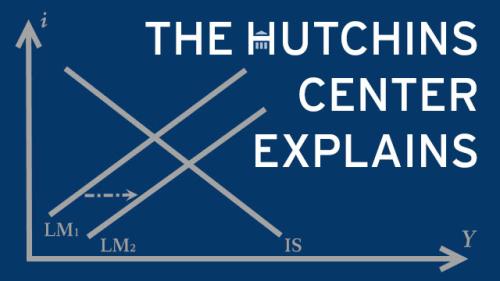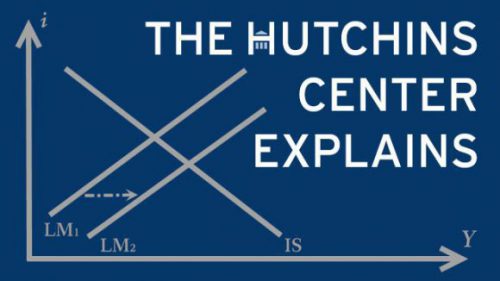What is the Phillips Curve?
The Phillips Curve describes the relationship between inflation and unemployment: Inflation is higher when unemployment is low and lower when unemployment is high. The underlying logic is that when there are lots of unfilled jobs and few unemployed workers, employers will have to offer higher wages, boosting inflation, and vice versa. The relationship was originally described by New Zealand economist A.W. Phillips in 1958, who examined data on unemployment and wages for the UK from 1861 to 1957.
The original Phillips Curve formulation posited a simple relationship between wage growth and unemployment. Since then, macroeconomists have formulated more sophisticated versions that account for the role of inflation expectations and changes in the long-run equilibrium rate of unemployment. The latter is often referred to as NAIRU (or the non-accelerating inflation rate of unemployment), defined as the lowest level to which of unemployment can fall without generating increases in inflation.
Why does the Phillips Curve matter?
The Phillips Curve is one key factor in the Federal Reserve’s decision-making on interest rates. The Fed’s mandate is to aim for maximum sustainable employment — basically the level of employment at the NAIRU— and stable prices—which it defines to be 2 percent inflation. Because monetary policy acts with a lag, the Fed wants to know what inflation will be in the future, not just at any given moment. The Phillips Curve is a tool the Fed uses to forecast what will happen to inflation when the unemployment rate falls, as it has in recent years.
What is the Phillips Curve telling us now?
In recent years, the historical relationship between unemployment and inflation appears to have changed. The unemployment rate has fallen to a 17-year low, but wage growth and inflation have not accelerated. The chart below shows that, from 1960-1985, a one percentage point drop in the gap between the current unemployment rate and the rate that economists deem sustainable in the long-run (the “unemployment gap”) was associated with a 0.18 percentage point acceleration in inflation measured by Personal Consumption Expenditures (PCE inflation). However, from 1986-2007, the effect of unemployment on inflation has been less than half of that, and since 2008, the effect has essentially disappeared. This phenomenon is often referred to as the flattening of the Phillips Curve. In other words, a tight labor market hasn’t led to a pickup in inflation.

One big question is whether the flattening of the Phillips Curve is an indication of a structural break or simply a shift in the way it’s measured. Former Fed Vice Chair Alan Blinder communicated this best in a WSJ Op-Ed:
“Since 2000, the correlation between unemployment and changes in inflation is nearly zero. On average, inflation has barely moved as unemployment rose and fell. This is puzzling, to say the least. The Fed needs to know whether the Phillips curve has died or has just taken an extended vacation.”
Could the Phillips Curve be dead?
The weak tradeoff between inflation and unemployment in recent years has led some to question whether the Phillips Curve is operative at all. In other words, some argue that employers simply don’t raise wages in response to a tight labor market anymore, and low unemployment doesn’t actually cause higher inflation. Here are a few reasons why this might be true.
Globalization
Large multinational companies draw from labor resources across the world rather than just in the U.S., meaning that they might respond to low unemployment here by hiring more abroad, rather than by raising wages. Some research suggests that this phenomenon has made inflation less sensitive to domestic factors.
Decrease in worker power
Over the past few decades, workers have seen low wage growth and a decline in their share of total income in the economy. Many economists argue that this is due to weaker worker bargaining power. This could mean that workers are less able to negotiate higher wages when unemployment is low, leading to a weaker relationship between unemployment, wage growth, and inflation.
What if the Phillips Curve is just ‘missing’?
Alternatively, some argue that the Phillips Curve is still alive and well, but it’s been masked by other changes in the economy: Here are a few of these changes:
Inflation expectations are well anchored.
Consumers and businesses respond not only to today’s economic conditions, but also to their expectations for the future, in particular their expectations for inflation. As then Fed Chair Janet Yellen noted in a September 2017 speech:
“In standard economic models, inflation expectations are an important determinant of actual inflation because, in deciding how much to adjust wages for individual jobs and prices of goods and services at a particular time, firms take into account the rate of overall inflation they expect to prevail in the future. Monetary policy presumably plays a key role in shaping these expectations by influencing the average rate of inflation experienced in the past over long periods of time, as well as by providing guidance about the FOMC’s objectives for inflation in the future.”
Inflation expectations have generally been low and stable around the Fed’s 2 percent inflation target since the 1980s. This stabilization of inflation expectations could be one reason why the Phillips Curve tradeoff appears weaker over time; if everyone just expects inflation to be 2 percent forever because they trust the Fed, then this might mask or suppress price changes in response to unemployment. This is indeed the reason put forth by some monetary policymakers as to why the traditional Phillips Curve has become a bad predictor of inflation.

The labor market isn’t as tight as the low unemployment rate suggests:
Some argue that the unemployment rate is overstating the tightness of the labor market, because it isn’t taking account of all those people who have left the labor market in recent years but might be lured back now that jobs are increasingly available. Indeed, the long-run slide in the share of prime age workers who are in the labor market has started to reverse in recent years, as shown in the chart below.

If the labor market isn’t actually all that tight, then the unemployment rate might not actually be below its long-run sustainable rate. Another way of saying this is that the NAIRU might be lower than economists think. Proponents of this argument make the case that, at least in the short-run, the economy can sustain low unemployment as people rejoin the workforce without generating much inflation.
E-commerce:
Some economists argue that the rise of large online stores like Amazon have increased efficiency in the retail sector and boosted price transparency, both of which have led to lower prices. Because this phenomenon is coinciding with a decline in the unemployment rate, it might be offsetting the increases in prices that would otherwise be forthcoming. But that doesn’t mean that the Phillips Curve is dead.
Why is this so important?
It is clear that the breakdown of the Phillips Curve relationship presents challenges for monetary policy. If the Phillips Curve relationship is dead, then low unemployment rates now may not be a cause for worry, meaning that the Fed can be less aggressive with rates hikes. It also means that the Fed may need to rethink how their actions link to their price stability objective. If, on the other hand, the underlying relationship between inflation and unemployment is active, then inflation will likely resurface and policymakers will want to act to slow the economy.
There is some disagreement among Fed policymakers about the usefulness of the Phillips Curve. St. Louis Fed President James Bullard and Minneapolis Fed President Neel Kashkari have argued that the Phillips Curve has become a poor signal of future inflation and may not be all that useful for conducting monetary policy. This view was recorded in the January 2018 FOMC meeting minutes:
A couple of participants questioned the usefulness of a Phillips Curve-type framework for policymaking, citing the limited ability of such frameworks to capture the relationship between economic activity and inflation.
Fed Chair Jerome Powell has often discussed the recent difficulty of estimating the unemployment inflation tradeoff from the Phillips Curve. Here he is in a June 2018 speech:
“Natural rate estimates [of unemployment] have always been uncertain, and may be even more so now as inflation has become less responsive to the unemployment rate. The anchoring of expectations is a welcome development and has likely played a role in flattening the Phillips Curve. But a flatter Phillips Curve makes it harder to assess whether movements in inflation reflect the cyclical position of the economy or other influences.”
However, Powell also notes that, to the extent the Phillips Curve relationship has become flatter because inflation expectations have become better anchored, this could be temporary:
“We should also remember that where inflation expectations are well anchored, it is likely because central banks have kept inflation under control. If central banks were instead to try to exploit the non-responsiveness of inflation to low unemployment and push resource utilization significantly and persistently past sustainable levels, the public might begin to question our commitment to low inflation, and expectations could come under upward pressure.”
What’s more, other Fed officials, such as Cleveland Fed President Loretta Mester, have expressed fears about overheating the economy with the unemployment rate so low. In a May speech, she said:
“In the past, when labor markets have moved too far beyond maximum employment, with the unemployment rate moving substantially below estimates of its longer-run level for some time, the economy overheated, inflation rose, and the economy ended up in a recession. Achieving a soft landing is difficult…”
It seems unlikely that the Fed will get a definitive resolution to the Philips Curve puzzle, given that the debate has been raging since the 1990s. How the Fed responds to the uncertainty, however, will have far reaching implications for monetary policy and the economy.








Commentary
The Hutchins Center Explains: The Phillips Curve
August 21, 2018